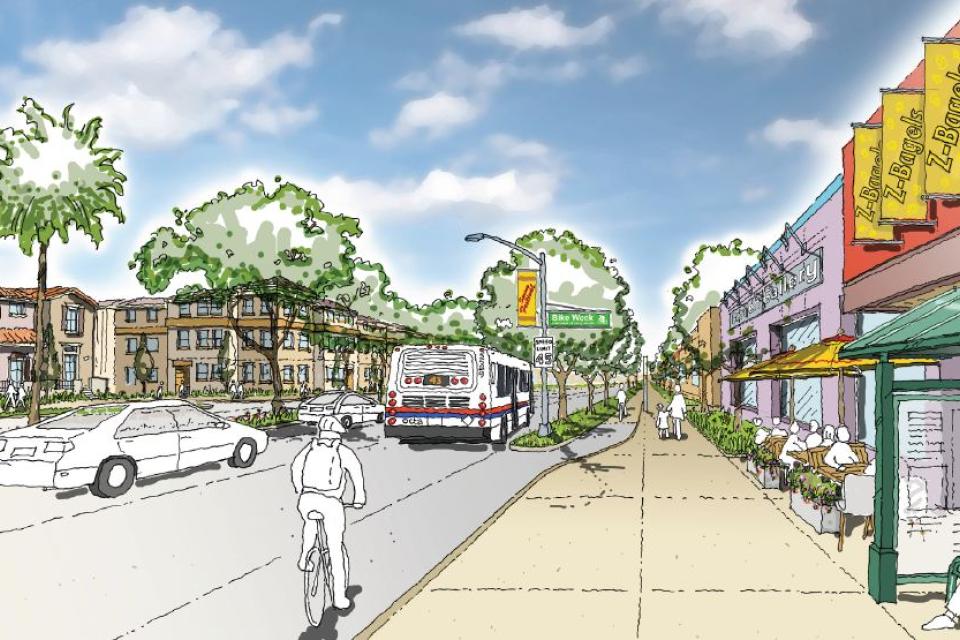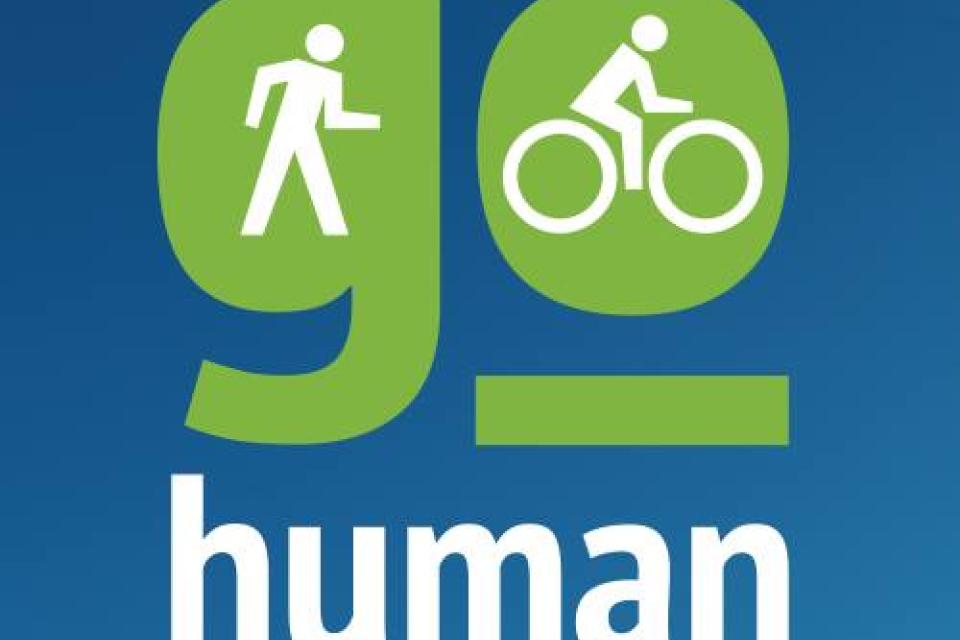Active Transportation

Active transportation refers to human powered transportation, and low speed electronic assist devices. Examples include but are not limited to bicycles, e-bicycles, tricycles, wheelchairs, electric wheelchairs, scooters, e-scooters, skates and skateboards.
Active transportation is a critical component in meeting environmental, economic and equity goals, as well as supporting jurisdictions in addressing their diverse transportation needs.
Contact
For more information on the Active Transportation Program, please contact:
Rachel Om
Senior Regional Planner
Mobility Planning and Goods Movement
om@scag.ca.gov
(213) 630-1550
Active Transportation Plan Funding
The California Active Transportation Program (ATP) was created by Senate Bill 99 (Chapter 359, Statutes 2013) and Assembly Bill 101 (Chapter 354, Statutes 2013), to encourage increased use of active modes of transportation, such as biking and walking. The ATP consolidates existing federal and state transportation programs, including the Transportation Alternatives Program, Bicycle Transportation Account and State Safe Routes to School, into a single program focused on making California a national leader in active transportation.
The california ATP has six main goals:
- Increase the proportion of trips accomplished by biking and walking.
- Increase the safety and mobility of non-motorized users.
- Advance the active transportation efforts of regional agencies to achieve greenhouse gas reduction goals as established pursuant to Senate Bill 375 (Chapter 728, Statutes of 2008) and Senate Bill 391 (Chapter 585, Statutes of 2009).
- Enhance public health, including reducing childhood obesity through programs including, but not limited to, projects eligible for Safe Routes to School Program funding.
- Ensure that disadvantaged communities fully share in the benefits of the program.
- Provide a broad spectrum of projects to benefit many types of active transportation users.
For more information, please visit California Transportation Commission ATP and Caltrans ATP.
Statewide and Regional Funding Opportunities
Active Transportation Program (ATP) funding is awarded to projects in the SCAG region through two funding programs: the Statewide ATP and SCAG’s Regional ATP. The statewide guidelines and regional guidelines direct project selection for each of the respective programs. Applications submitted to the statewide call for projects but unsuccessful in receiving funding are automatically considered for funding in the regional ATP. There is a consolidated call for projects for both funding programs issued by the California Transportation Commission (CTC) in spring of every even year (e.g. 2026) to solicit applications for all eligible project types.
Active Transportation Program Cycle 8
Active Transportation Program (ATP) Cycle 8 will offer an estimated $550 million in funding across the state, with an estimated $114 million set aside for SCAG’s Regional Active Transportation Program. ATP Cycle 8 includes funding for fiscal years 2027-28 through 2030-31. The state’s ATP guidelines require the following for SCAG’s Regional Active Transportation Program:
- A minimum of 25 percent of regional funds must benefit disadvantaged communities. The ATP state guidelines provide multiple definitions for disadvantaged communities, including regional definitions, such as SCAG’s Priority Equity Communities.
- A maximum of two percent of regional funds for the development of plans, such as active transportation plans, safe routes plans, and bicycle or pedestrian plans; all plans must benefit disadvantaged communities.
The statewide ATP call for projects includes the following project types:
- Infrastructure Projects: Capital projects that typically include the environmental, design, right-of-way, and construction phases of a capital project (i.e., facilities) .
- Plans: The development of a community-wide bicycle, pedestrian, safe routes to school or active transportation plan that encompasses or is predominately located in a disadvantaged community.
- Non-Infrastructure Projects: education and encouragement programs.
- Infrastructure Projects with Non-Infrastructure Components: Capital projects with education or encouragement components.
The following are anticipated key dates for ATP Cycle 8:
Action | Date |
|---|---|
Draft ATP Regional Guidelines go before SCAG Regional Council for adoption | March 5, 2026 |
ATP State Guidelines go before California Transportation Commission for adoption | March 19, 2026 |
Statewide ATP call for projects scheduled to open | March 19, 2026 |
Statewide ATP call for projects scheduled to close | June 22, 2026 |
California Transportation Commission adopts ATP Cycle 8 Statewide and Small Urban & Rural Components | Dec. 3-4, 2026 |
Draft SCAG Regional ATP goes before SCAG Regional Council for adoption | April 1, 2027 |
SCAG Regional ATP goes before California Transportation Commission for adoption | June 2027 |
California Active Transportation Data Portal
The California Active Transportation Data Portal (CAT Data Portal) was developed to collect, store, and visualize bicyclist, pedestrian, wheelchair, and other micromobility device volume for infrastructure and planning projects across California.
The CAT Data Portal builds on SCAG’s Active Transportation Database (ATDB), which collected and stored bicyclist and pedestrian data for the SCAG region. SCAG’s ATDB was migrated to Caltrans and UC Berkeley SafeTREC in 2024 as part of the development of a statewide database. The CAT Data Portal was launched in 2025.
Active Transportation Plan Toolkit
SCAG’s Active Transportation Plan Toolkit is a suite of resources for communities to develop an active transportation plan. This page offers information about the toolkit, including how it was developed, what’s included, who it serves, and how to access it.
Disadvantaged Communities Active Transportation Planning Initiative
The toolkit, released in 2019, marks the culmination of the Disadvantaged Communities Active Transportation Planning Initiative, a 2.5-year effort to address fatalities and serious injuries from traffic collisions concentrated on a small number of streets in Southern California, with more severe impacts for people walking and bicycling, known as the High Injury Network.
In total, 56 percent of the SCAG region's High Injury Network is located in Disadvantaged Communities (DACs), and less than 26 percent of these communities have existing active transportation plans, which creates barriers to processes of securing funding, implementing comprehensive networks, and improving access, safety, and health.
SCAG launched the Disadvantaged Communities Active Transportation Planning Initiative in 2019 to develop, pilot, and refine the toolkit in partnership with seven DACs in the region: Adelanto, Calipatria, Highland, Perris, Santa Fe Springs, Saticoy, and Stanton. These communities offered diverse contexts for developing a customizable and useful toolkit by spanning urban and rural settings, incorporated and unincorporated status, and all six counties within the SCAG region.
The pilot process culminated in seven complete active transportation plans in which more than 3,000 community members helped develop over 317 miles of recommended improvements for walking and biking.
Active Transportation Plan Toolkit Components
The Active Transportation Plan Toolkit consists of three parts:
1. Manual: Provides an overview of the process behind and how-to guide for using the Active Transportation Plan Toolkit.
2. Template: Includes a customizable Active Transportation Plan document template consisting of all required and best-practice elements.
3. Resources: Offers a suite of materials to guide the planning process and support community engagement, data analysis, project scheduling, graphics, adoption, implementations, and more.
Centering Equity and Impacted Residents
Rooted in improving outcomes for areas of persistent poverty, the pilot process and Active Transportation Plan Toolkit are guided by an Outreach and Equity Framework that invites vulnerable residents to take an active role in the planning process. Communities that use the toolkit are encouraged to develop community advisory committees and partner with community-based organizations to utilize a variety of engagement activities and serve diverse residents.
Who Can Use the Toolkit?
Designed to provide a low-cost model for communities throughout the SCAG region to develop their own active transportation plans, the Active Transportation Plan Toolkit is available at no cost for use by cities, counties, and other governmental agencies, as well as community groups and leaders to conceptualize, articulate, and implement plans to support walking and biking. Although developed for the SCAG region, communities throughout California and beyond may access and customize the toolkit accordingly.
Communities might also find the toolkit useful for active transportation planning work beyond developing a full plan (e.g., learning about active transportation, developing new programs, and conducting outreach during project implementation).


